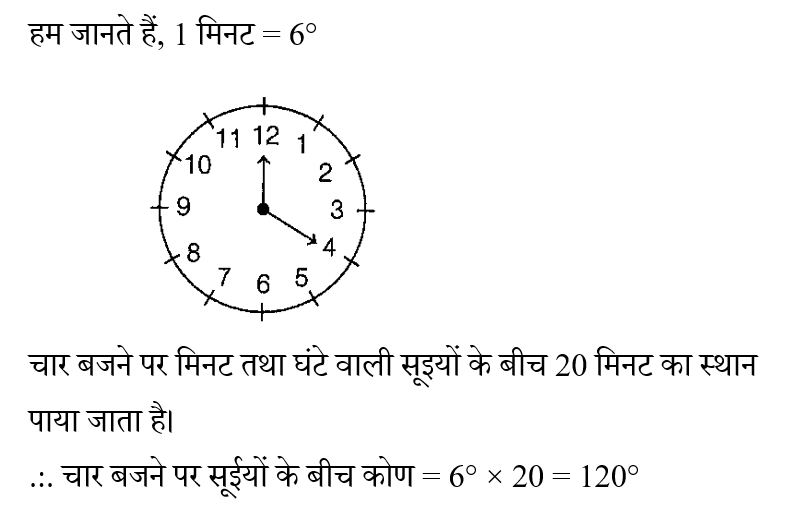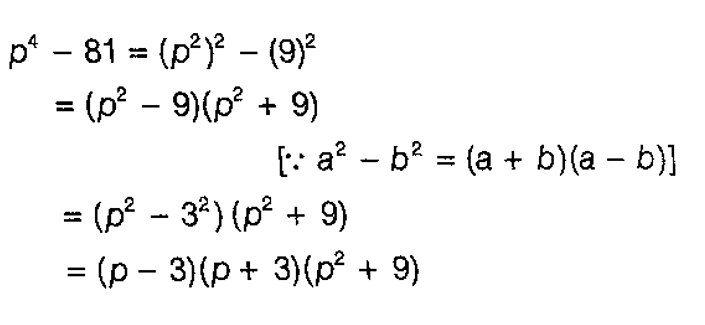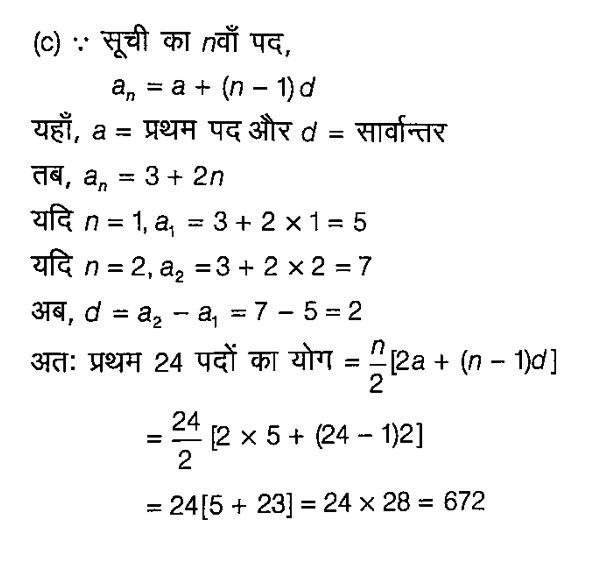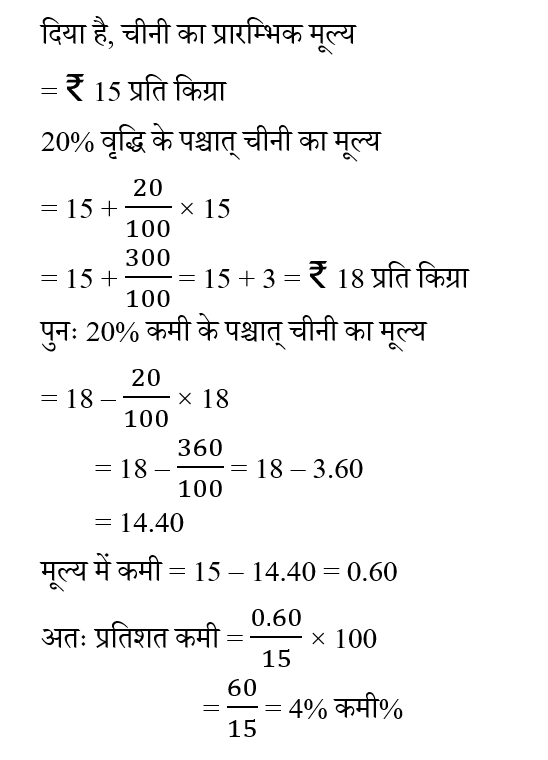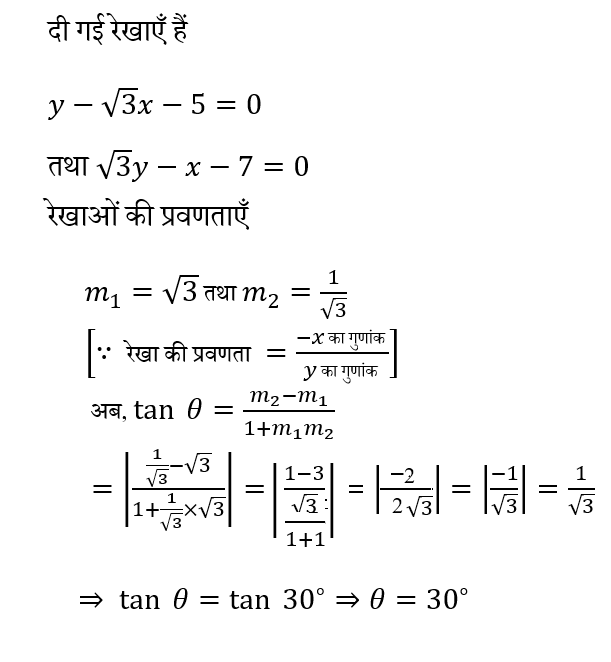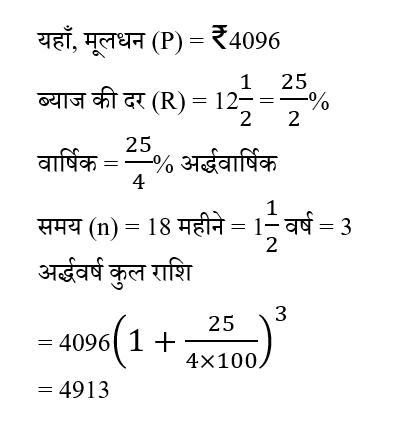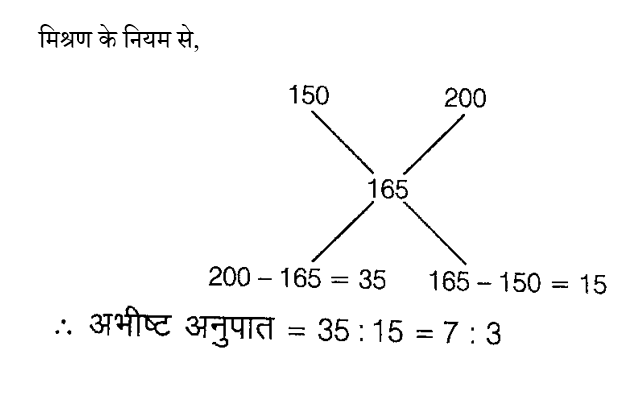Question 1:
What is the mode of the given series?
दी गई श्रृंखला का बहुलक क्या है?
4, 3, 7, 13, 16, 23, 3, 4, 7, 4, 3, 3, 9, 6, 9, 6
Question 2:
At 4 o'clock the angle between the hands of the clock is
4 बजने पर घड़ी की सूइयों के बीच का कोण होता है
Question 3:
A circle is inscribed in ∆MNO, with MN = 12 cm, MO = 14 cm and NO = 18 cm, touching the sides at P, Q, R, then MP + NQ + RO is
∆MNO में एक वृत्त को अंकित किया गया है, जिसमें MN = 12 सेमी, MO = 14 सेमी और NO = 18 सेमी है, जो भुजाओं को P, Q, R पर स्पर्श करता है, तो MP + NQ + RO है
Question 4: 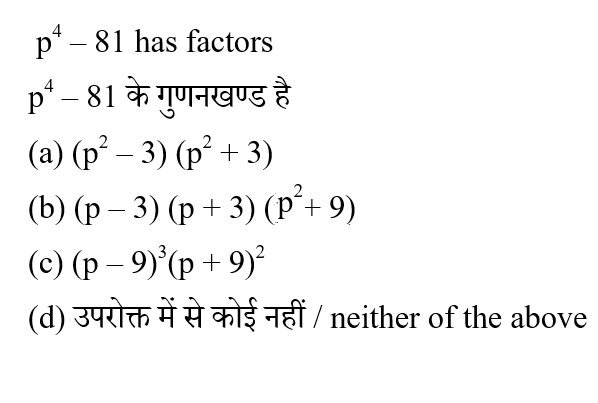
Question 5: 
Question 6:
If the price of sugar is ₹ 15 per kg and if the price is increased by 20% and then again decreased by 20%, then the percentage decrease or increase in the price will be
यदि चीनी का मूल्य ₹ 15 प्रति किग्रा है और यदि मूल्य में 20% की वृद्धि करके पुनः 20% की कमी कर दी जाती है, तो मूल्य में प्रतिशत कमी या वृद्धि होगी
Question 7: 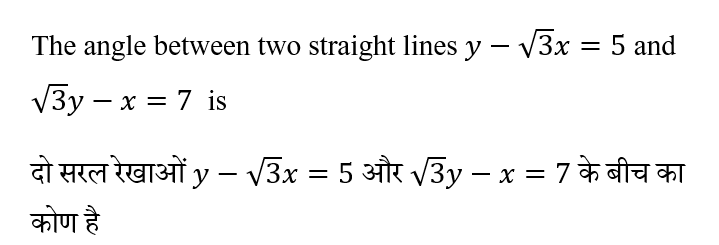
Question 8:
A shopkeeper buys 80 items for ₹2400 and sells them at a profit of 16%. The selling price of an item is
एक दुकानदार ₹2400 में 80 वस्तुएँ खरीदता है । और उन्हें 16% के लाभ पर बेचता है। एक वस्तु का विक्रय मूल्य है
Question 9: 
Question 10:
In what ratio should teas costing ₹ 150 per kg and ₹ 200 per kg be mixed so that the cost of the mixture becomes ₹ 165 per kg?
₹150 प्रति किग्रा और ₹200 प्रति किग्रा वाली चायों को किस अनुपात में मिलाया जाए कि मिश्रण का मूल्य ₹165 प्रति किग्रा हो जाए?

